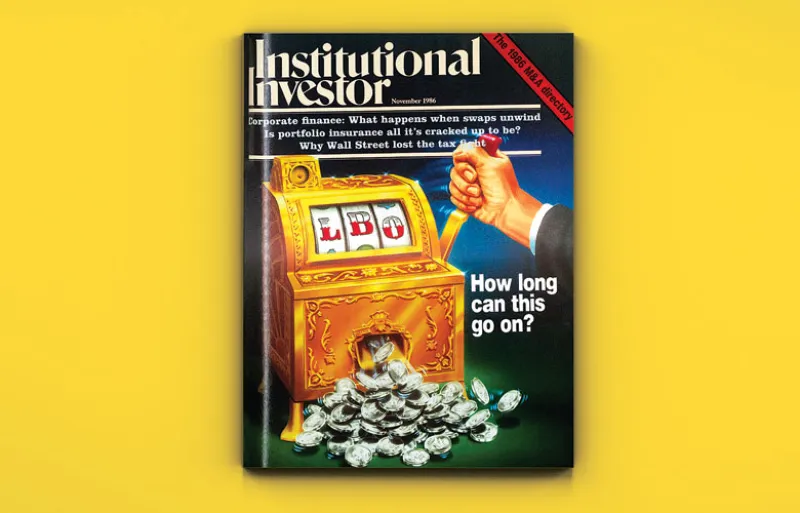Leveraged buyouts — acquisitions made through debt rather than equity — were the “hottest financing game going” in 1986, when Institutional Investor’s November cover story asked, “LBOs: How long can this go on?”
It’s a question investors are pondering once again.
Author Frederic Dannen observed intense competition back then, which some worried could drive up company valuations and eventually lead to a leveraged buyout bust. Market conditions such as “unlimited” financing, boutique private equity firms “replicating like DNA molecules,” and pension funds funneling cash into the asset class suggested to Dannen that leveraged buyouts could be at their peak.
The problem, according to Dannen, was not an external threat to the market, but an internal one.
“Competition will probably continue to drive up the price of doing deals and lead to LBOs of great risk,” he wrote.
Sound familiar? Today’s private equity market in many ways resembles that of 1986. Preqin data shows private equity firms sitting on record levels of dry powder — nearly $1 trillion as of September 2017.
Many of these firms have diversified their businesses over time, moving into private credit and real asset investing. But buyout funds dominate fundraising, capturing $66 billion of the $95 billion raised in total by private equity firms in the third quarter of this year. The leveraged buyout remains one of Wall Street’s favorite financial tools.
Dannen’s 1986 article correctly predicted that leveraged buyouts would be “not a fad but a permanent fixture of corporate finance.” He was right, too, that the frenzy he observed for completing these types of deals would result in “excessive risk and eventual calamity.”
Since that issue of II hit newsstands, the private equity industry has weathered two major cycles of leveraged-buyout boom and bust.
The first bust arrived in the early 90s. KKR had acquired the RJR Nabisco in 1988, only for Nabisco to refinance its debt just months later. Poison pill strategies entered the mainstream during this period, providing a line of defense for companies that did not want to be acquired.v
In 2007, booming deal valuations and private equity dry powder levels turned to another industry bust. Nearly $45 billion worth of private equity sponsored deals were renegotiated or completely abandoned that year, according to a paper by Justin Browder of the University of Miami Law School Institutional Repository.
“By 2008, annual private equity deal volume had plummeted from $375 billion to $188.7 billion worth of announced transactions,” Browder wrote.
Ten years have elapsed since the last leveraged-buyout bust. Institutional investors are betting billions that the next one is still years out.
Indeed, Apollo Global Management raised the largest-ever buyout fund last summer at $25 billion, breaking the record last set in August 2007. Blackstone Capital Partners V closed with $21.7 billion that summer, on the cusp of an all-out market crisis.







